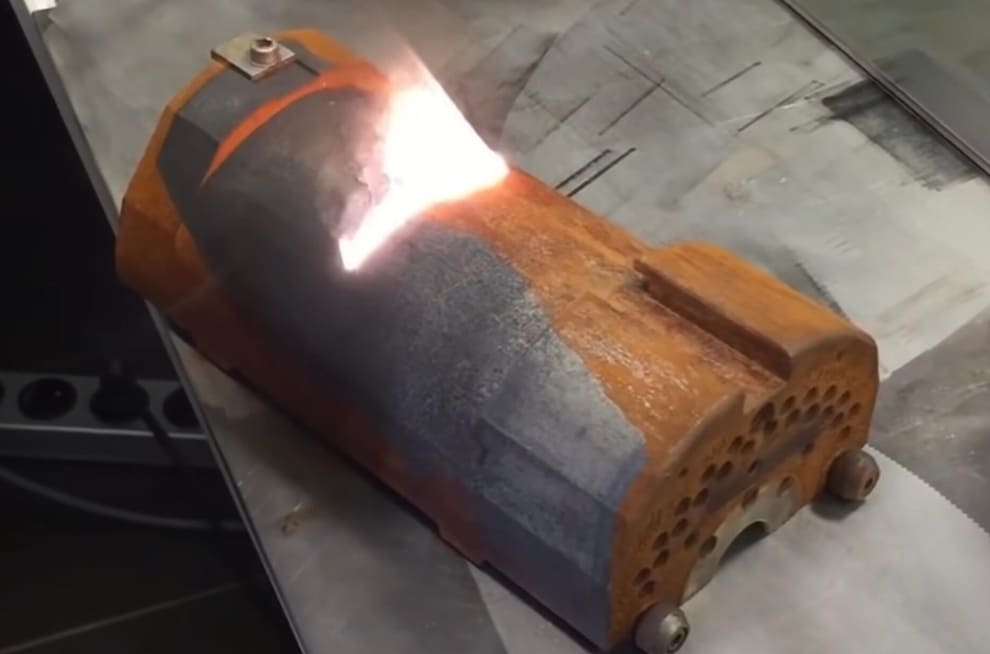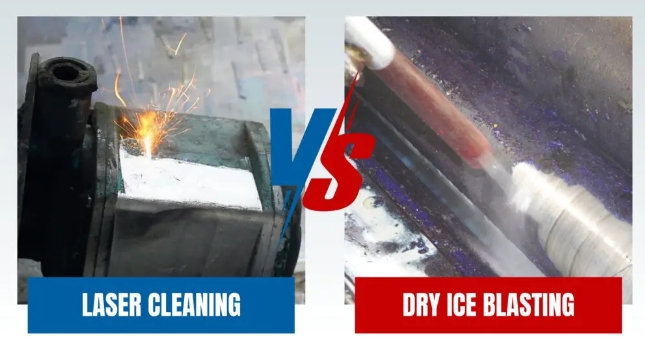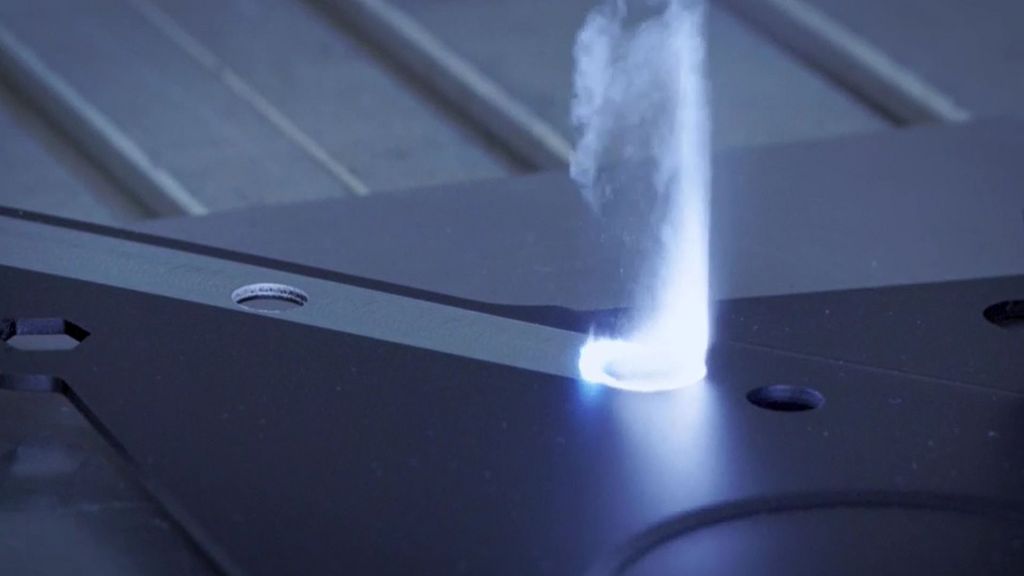Modern industries require cleaning solutions that are effective, eco-friendly, and gentle. The shift from traditional solvent or abrasive methods reflects ecological awareness. It also shows a need for processes safe for personnel and materials. For industrial equipment, gentle, efficient cleaning is vital. Such methods maintain integrity, extend lifespan, and ensure quality. They achieve this without damaging sensitive surfaces. This demand spurred advanced cleaning technologies. These methods minimize harsh chemicals and secondary waste, promoting sustainable maintenance. Dry ice cleaning and laser cleaning are prominent examples. This article explores these techniques, their mechanisms, applications, and provides a direct comparison.
Dry Ice Cleaning: Sublimation Power
Dry ice cleaning, or CO2 blasting, is an innovative method using solid carbon dioxide (CO2) pellets. This process offers unique benefits for various industrial cleaning challenges.
How Dry Ice Cleaning Works
The process propels small, dense dry ice pellets at high speeds toward a surface. Upon impact, three phenomena occur. First, kinetic energy dislodges contaminants. Second, the dry ice’s extreme cold (-78.5°C) embrittles the contaminant layer. This weakens its adhesion. Finally, pellets sublimate on impact, expanding rapidly. This solid-to-gas transition creates micro-explosions, lifting contaminants. The gaseous CO2 dissipates, leaving only dislodged debris. This mechanism cleans effectively without abrasive wear.
Applications: Diverse Surfaces
Dry ice cleaning is versatile, suiting many industries. It is effective on metals, wood, plastics, rubber, and composites. Its non-conductive nature makes it safe for electrical components. Common uses include removing paints, oils, greases, adhesives, soot, and mold. It cleans industrial machinery, production molds, automotive parts, and food processing equipment. Historical artifacts and electrical installations also benefit. Cleaning without water or chemicals is valuable for sensitive items.
Advantages of Dry Ice Cleaning
This method offers several significant benefits:
-
Non-abrasive, Chemical-Free: Generally non-abrasive, it preserves surface integrity. Ideal for delicate molds and parts with critical tolerances. Eliminates harsh chemicals, reducing environmental impact and health hazards.
-
No Secondary Media Residue: Dry ice sublimates, leaving only the dislodged contaminant. This eliminates costly cleanup of residual media like sand or beads, reducing project time and disposal costs.
-
Effective for Thick Contaminants: Thermal shock and kinetic energy efficiently remove thick contaminant layers, often in one pass.
-
Environmentally Friendly, No Fire Risk: Uses reclaimed CO2. The process is dry, non-toxic, and non-conductive, eliminating fire hazards and wastewater.
Disadvantages of Dry Ice Cleaning
Despite benefits, it has operational drawbacks:
-
High Operational/Storage Costs: Dry ice requires on-demand production or frequent deliveries due to sublimation. Specialized insulated storage adds to costs.
-
Safety: CO2 Buildup, Cold Exposure: CO2 gas can displace oxygen in poorly ventilated areas, posing asphyxiation risks. PPE is required against frostbite and noise.
-
Noise and Ventilation: Equipment is loud (>100 dB), needing hearing protection. Adequate ventilation is crucial to prevent CO2 accumulation.
-
Less Effective on Hard/Embedded Contaminants: May struggle with very hard, thin, or tightly bonded coatings where its non-abrasive nature is insufficient.
Laser Cleaning: Precision with Light
Laser cleaning, or laser ablation, is an advanced technique. It uses directed laser energy to remove contaminants without damaging the substrate.
How Laser Cleaning Works
A high-intensity laser beam targets the contaminated surface. The contaminant absorbs laser energy, leading to rapid local temperature increase. Contaminants vaporize (ablate) or expand from thermal shock, breaking their bond with the substrate. Laser parameters (wavelength, pulse duration, power) are carefully chosen for the contaminant and substrate. This ensures energy targets the unwanted layer, leaving the substrate unaffected. Vaporized contaminants are removed by a fume extraction system.
Applications: Delicate, Precise Cleaning
Laser cleaning excels where precision and minimal substrate impact are critical:
-
Aerospace/Aviation: Paint stripping, surface preparation for bonding, cleaning turbine blades.
-
Electronics: Cleaning micro-components, circuit boards, precise wire insulation removal.
-
Automotive: Cleaning molds, surface preparation for welding, restoring parts.
-
Cultural Heritage: Gently removing grime from historical artifacts.
-
Tool/Mold Cleaning: Removing release agents and residues from industrial molds.
Advantages of Laser Cleaning
Laser technology offers compelling benefits:
-
Non-Contact, Highly Precise: The beam is focusable for selective, micron-level contaminant removal. No mechanical force prevents wear.
-
No Consumables or Secondary Waste: Uses only light, eliminating consumable costs and secondary waste. Simplifies process, reduces environmental impact.
-
Environmentally Sustainable: Energy-efficient, avoids chemicals and water. Vaporized contaminants are captured.
-
Automation Ready: Easily automated with robots or CNC systems for consistent results and production line integration.
-
Safer Operation (Enclosed Systems): Enclosed systems prevent laser exposure. Fume extraction manages vaporized particles, eliminating toxic byproduct concerns.
-
Faster Speeds, Consistent Results: Often faster than other methods, especially for complex geometries, delivering predictable outcomes.
Disadvantages of Laser Cleaning
Limitations should be considered:
-
Higher Initial Investment: Equipment cost is typically higher than for traditional systems.
-
Limited on Certain Surfaces: Highly reflective or very porous materials can be challenging, potentially reducing efficiency or causing substrate damage.
-
Technical Expertise Needed: Initial calibration, parameter setting, and maintenance require skilled personnel.
-
Potential Substrate Damage (Improper Calibration): Incorrect laser settings can cause thermal damage. Careful parameter selection is vital.
-
Fume Extraction Required: Vaporized contaminants necessitate effective fume capture and filtration.
Direct Comparison: Dry Ice Blasting vs. Laser Cleaning
Choosing an optimal cleaning method requires careful evaluation. Dry ice blasting and laser cleaning are modern alternatives, differing in operation, environmental impact, and cost.
Environmental Impact
-
Dry Ice: Uses recycled CO2 but releases it. Main benefit: no secondary waste media. Dislodged contaminant needs disposal.
-
Laser: Minimal environmental footprint. No consumables, no secondary waste. Contaminants are captured and filtered. Cleaner, less waste management.
Precision
-
Dry Ice: Less precise. Pellets spread on impact. Suits larger areas where pinpoint accuracy is secondary.
-
Laser: Exceptionally precise. Beam is finely focused for selective, micron-scale removal. Ideal for delicate, intricate parts.
Safety
-
Dry Ice: Risks: CO2 buildup (asphyxiation), frostbite, high noise. Comprehensive PPE essential.
-
Laser: Safer in enclosed systems with interlocks. No CO2 or cold risks. Fume extraction manages vaporized material. Simpler PPE often suffices.
Cost
-
Dry Ice: Moderate initial investment. High operational costs (dry ice, storage, labor).
-
Laser: Higher initial investment. Lower long-term operational costs (no consumables, minimal waste, automation potential). Often lower TCO.
Abrasiveness
-
Dry Ice: Generally non-abrasive but kinetic impact can be mildly abrasive on soft surfaces.
-
Laser: Truly non-contact, non-abrasive. Removal is by ablation/thermal shock. Preserves delicate surfaces when calibrated correctly.
Operational Factors
-
Dry Ice: Involves dry ice logistics, noise management, and critical ventilation. Often more manual.
-
Laser: Quieter. Highly automatable and integrable. Requires fume extraction but different ventilation needs.
Key Benefits of Laser Cleaning Emphasized
Laser cleaning is transformative, offering advantages where precision, efficiency, safety, and eco-friendliness are paramount.
Superior Precision for Complex Parts
Unparalleled precision allows selective contaminant removal with micron-level accuracy. Vital for delicate substrates or intricate geometries. Ensures only unwanted material is ablated, preserving substrate integrity.
Lower Lifetime Costs
Despite higher initial outlay, TCO is often lower. Eliminates consumables (solvents, media) and associated storage/disposal costs. Automated systems reduce downtime and labor, increasing productivity.
Enhanced Safety
Enclosed systems prevent laser exposure. No CO2 asphyxiation or frostbite risks. No VOCs or harsh chemicals (with proper fume extraction). Healthier work environment, simpler safety compliance.
Environmentally Friendly: Zero Secondary Waste
A green solution: dry process, no chemicals or water. Produces no secondary waste streams. Vaporized contaminants are filtered, minimizing waste volume.
Faster Processing for High-Volume Production
Often offers faster speeds, especially automated. Efficient ablation and precise targeting mean short cleaning cycles, ideal for high-volume manufacturing.
Versatility Across Industries
Suits aerospace, electronics, automotive, cultural heritage, and tool maintenance. Removes rust, paint, oxides, grease from metals, composites, and some non-metals.
Conclusion: Selecting Advanced Cleaning Technology
Deciding between dry ice cleaning and laser cleaning depends on specific job details. Think about the type of dirt, how delicate the surface is, your budget, and your safety and environmental aims. Both methods are new improvements. Companies that need very exact cleaning, want to be safe, and care about the environment often choose laser cleaning. Lasers clean delicate items gently. Since it doesn’t use up materials and creates no extra trash, it’s good for the Earth and can save money over time. Dry ice cleans thick grime and is safe near electric parts. A big plus is that it doesn’t leave behind any messy cleaning stuff when the job is done. It has cost and safety issues. Companies need to think about all the costs involved, like materials used, getting rid of waste, repairs, paying workers, and time the machines are not working. Safety and nature matter. Many modern businesses find that laser cleaning works best because it fits well with new ways of working and goals to protect the environment for the future. Good choices pay off long-term.
Post time: May-13-2025














